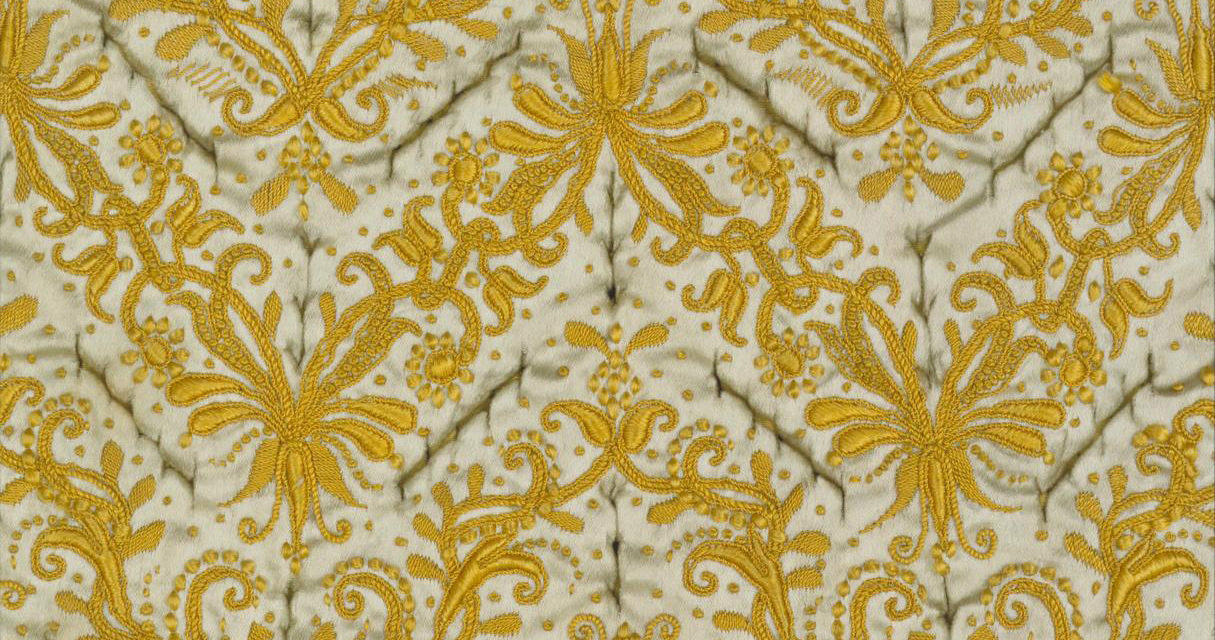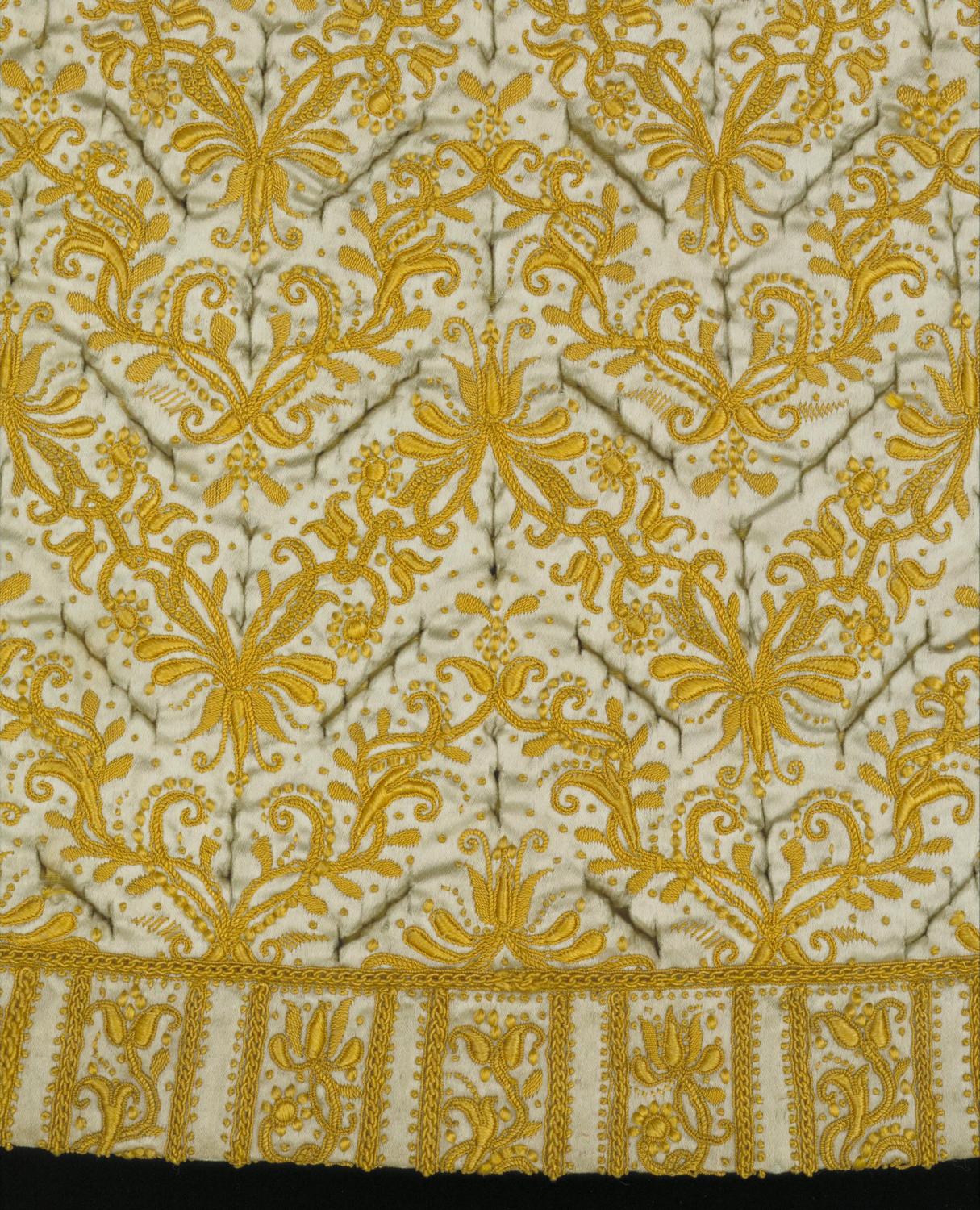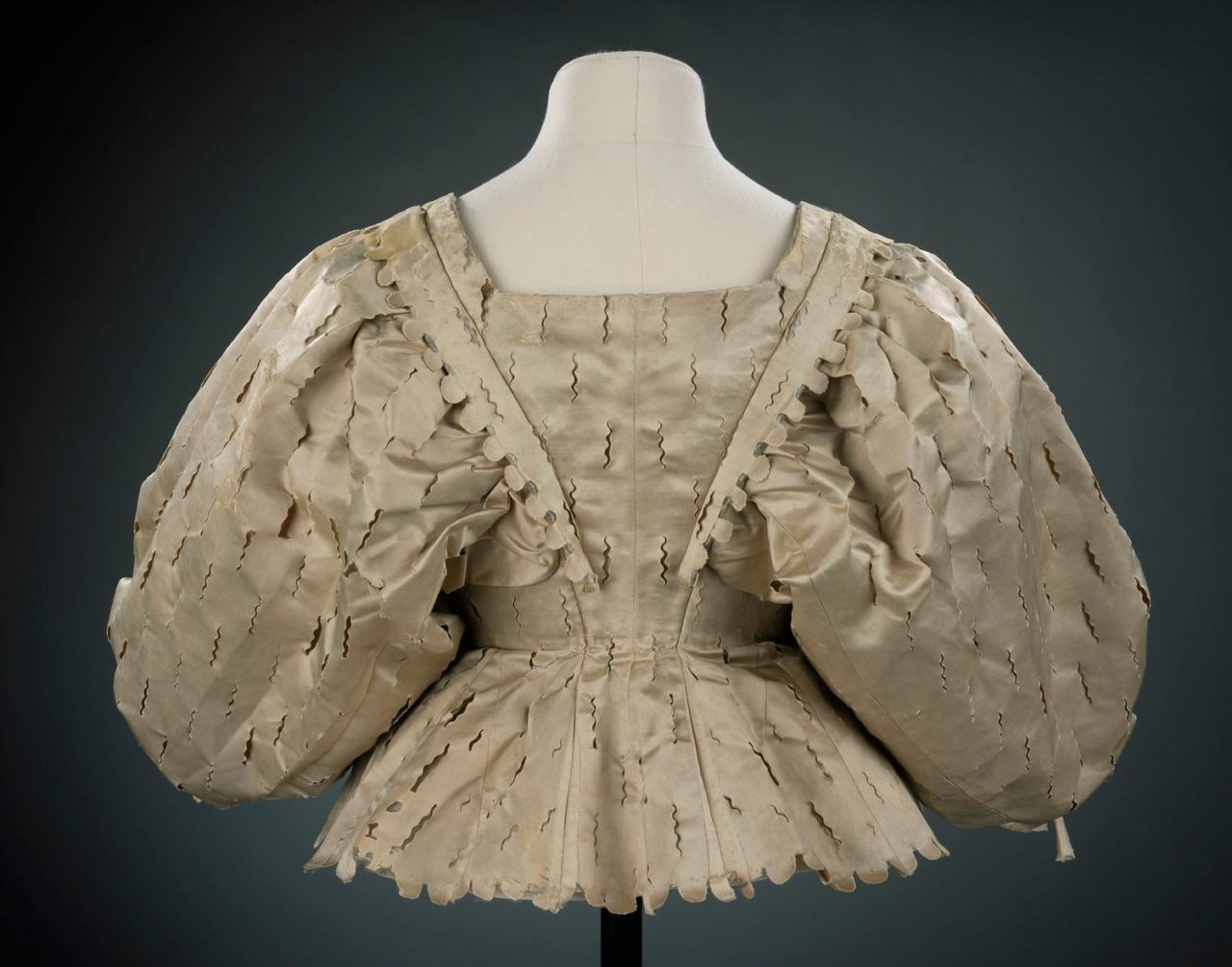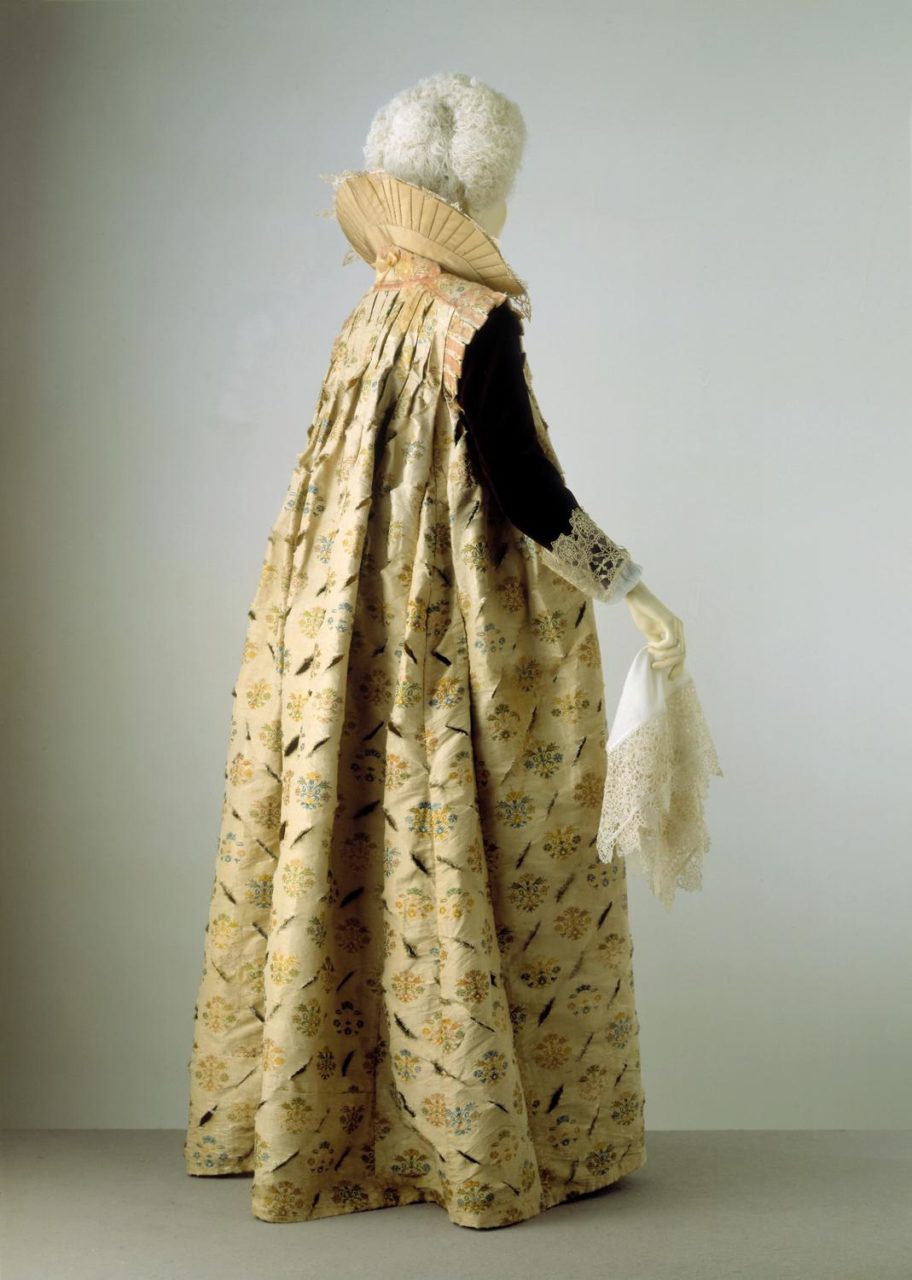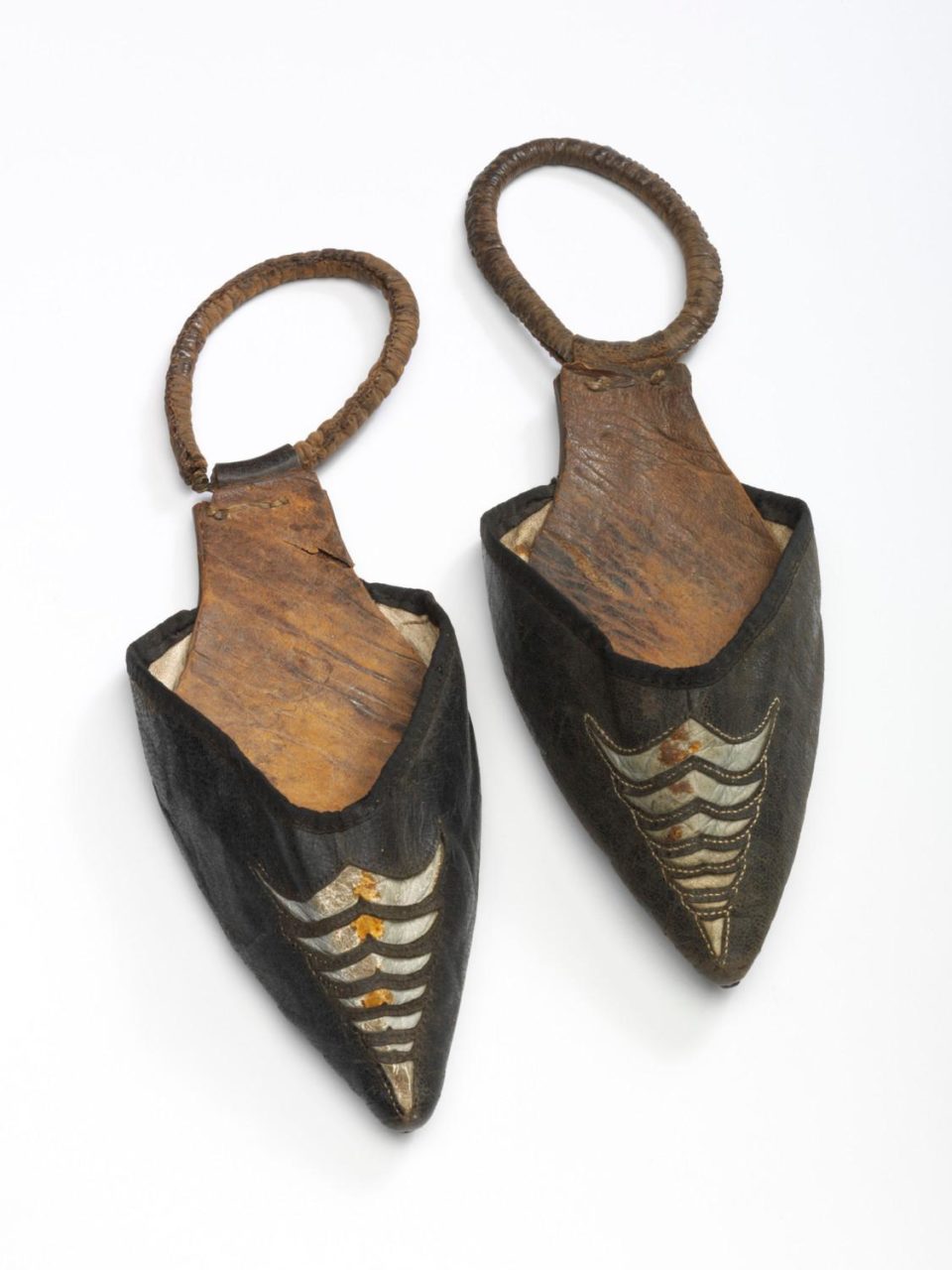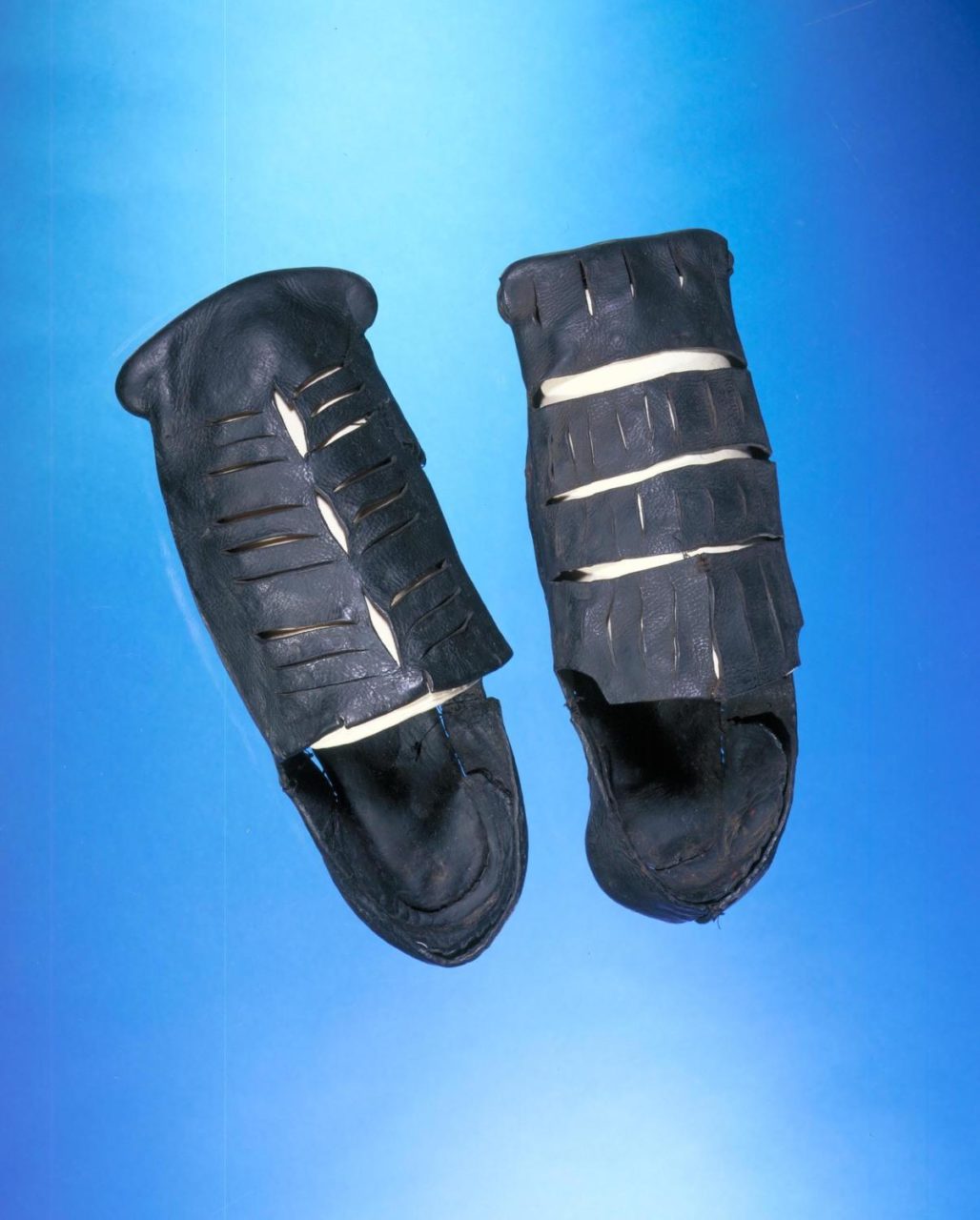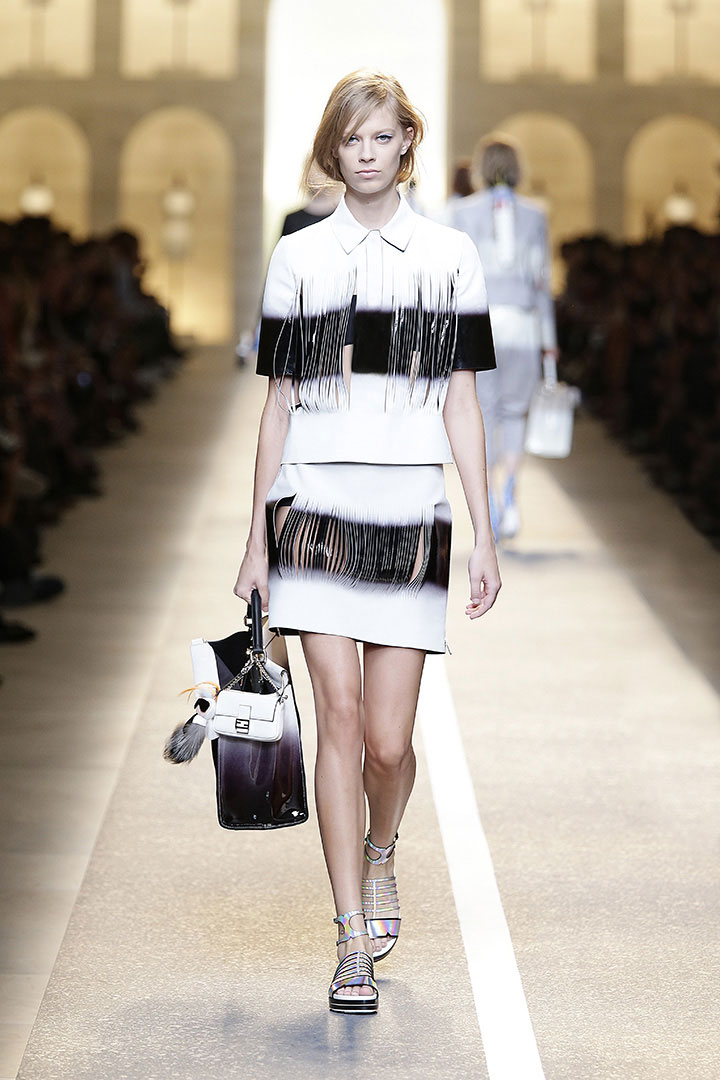A decorative technique of cutting slits in the outer layer of a garment or accessory in order to expose the fabric underneath.
The Details
The Victoria and Albert Museum in London defines slashing as: “a decorative technique that made regular, spaced cuts into the fabric of a garment, hat or shoe.” The museum has a 17th-century cloak that shows the effect of slashing quite well (Fig. 1); of which they write:
“This semi-circular cloak is decorated with slashing, pinking and embroidery…. In this cloak, the slashes have been crossed with smaller cuts or ‘pinks’. Each has been carefully placed between the embroidered motifs and the slashes grow larger in size moving from neck to hem. The embroidery pattern is worked in satin stitch, French knots and knotted chain stitch, and imitates the designs of woven silks.”
Slashes were not always in straight lines, as a 17th-century bodice in the V&A’s collection (Fig. 2) demonstrates:
“In the 1630s, women’s fashions featured high waistlines and short full sleeves set deep into the back of the bodice. This bodice demonstrates that slashing, popular in the 16th century, continued well into the 17th century. The satin has been deliberately cut in regularly placed wavy lines.”
Sara Pendergast and Tom Pendergast writes in Fashion, Costume, and Culture: Clothing, Headwear, Body Decorations, and Footwear through the Ages (2004):
“The decorative technique known as slashing involved making small cuts in the outer fabric of a garment so as to reveal the inner lining. As with dagging, slashing was performed on all variety of garments, from men’s doublets, a padded over-shirt, and breeches to women’s gowns and even to shoes.” (452-53)
Not only were garments slashed, so were accessories. Shoes were often slashed; of the 16th-century leather duckbill shoes in their collection (Fig. 5), the V&A writes:
“This style was fashionable during the reign from 1509-1547 of Henry VIII. It was a complete change from the very pointed toe favoured at the end of the 15th century. The wide shoes echoed the line of fashionable dress for men, who wore doublets (jackets) with broad padded shoulders. The slashed decoration made the leather more flexible and therefore more comfortable to wear. The shoe originally had bright coloured linings which could also be glimpsed through the slashes. The linings have not survived.”
Fig. 1 - Designer unknown (Italian). Cloak, 1610-1620. Silk, embroidered in silk thread; 78 cm (30 in). London: Victoria & Albert Museum, 378-1898. Source: Victoria & Albert Museum
Fig. 2 - Designer unknown (English). Bodice, 1630-1639. Silk satin, silk taffeta, canvas, buckram and whalebone, handsewn; 42.5 x 88.0 cm (17 x 34 in). London: Victoria and Albert Museum, 172-1900. Source: Victoria and Albert Museum
Fig. 3 - Designer unknown (British). Gown, 1610-1615. Silk, fustian and ribbon, hand sewn with silk and linen threads; 53.34 x 147.5 cm (21 x 58 in). London: Victoria and Albert Museum, 189-1900. Source: Victoria and Albert Museum
Fig. 4 - Designer unknown (British). Pair of overshoes, ca. 1797. Leather, with slashed design; 15 cm (6 in). London: Victoria & Albert Museum, 608A&C-1884. Given by Mr Henry Willett. Source: Victoria & Albert Museum
Fig. 5 - Designer unknown. Shoe, ca. 1520-1540. Tanned leather (modern thread); 8 x 10.6 x 28 cm (3 x 4 x 11 in). London: Victoria & Albert Museum, T.412-1913. Given by Messrs Harrods Ltd.. Source: Victoria & Albert Museum
Fig. 6 - Designer unknown (Italian). Fragment of stamped velvet with slashing, 16th century. Silk; 38.7 x 17.1 cm (15 1/4 x 6 3/4 in). New York: The Metropolitan Museum of Art, 2002.494.470. Gift of Nanette B. Kelekian, in honor of Olga Raggio, 2002. Source: The Metropolitan Museum of Art
Its Afterlife
A modern interpretation of slashing can be seen in Fendi’s Spring 2015 show (Fig. 7) and in Vivienne Westwood’s S/S 1990 collection (Fig. 8).
Fig. 7 - Fendi. Look 20, Spring 2015. Source: Fashionreporters.com
Fig. 8 - Vivienne Westwood (English, 1941-). Cut, Slash & Pull, Spring/Summer 1990. Cut satin. London, T.189:1, 2-1991. Given by Vivienne Westwood. Source: Victoria & Albert Museum
References:
- “Bodice | V&A Search the Collections.” V and A Collections, October 5, 2017. http://collections.vam.ac.uk/item/O115754.
- “Cloak | V&A Search the Collections.” V and A Collections, October 6, 2017. http://collections.vam.ac.uk/item/O137745.
- “Dagging and Slashing.” In Fashion, Costume, and Culture: Clothing, Headwear, Body Decorations, and Footwear through the Ages, edited by Sara Pendergast and Tom Pendergast, 452-453. Vol. 3, European Culture from the Renaissance to the Modern Era. Detroit: UXL, 2004. Gale Virtual Reference Library (accessed September 28, 2017). http://libproxy.fitsuny.edu:2200/ps/i.do?p=GVRL&sw=w&u=fitsuny&v=2.1&it=r&id=GALE%7CCX3425500284&asid=8b4a1d8419d2cad67224a33dc266f6ad.
- “Shoe | V&A Search the Collections.” V and A Collections, October 6, 2017. http://collections.vam.ac.uk/item/O74416.
- Vincent, Susan. “Fashioning Appearances.” In Dressing the Elite: Dressing the Elite Clothes in Early Modern England, 13–46. Oxford: Berg, 2003. Accessed December 14, 2016. http://dx.doi.org/10.2752/9781847889003/DRSELITE00010006.
- Vincent, Susan. “None Shall Wear.” In Dressing the Elite: Dressing the Elite Clothes in Early Modern England, 117–152. Oxford: Berg, 2003. Accessed December 14, 2016. http://dx.doi.org/10.2752/9781847889003/DRSELITE00010009.

